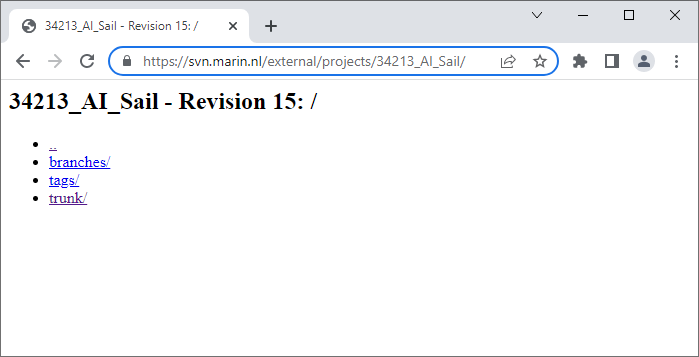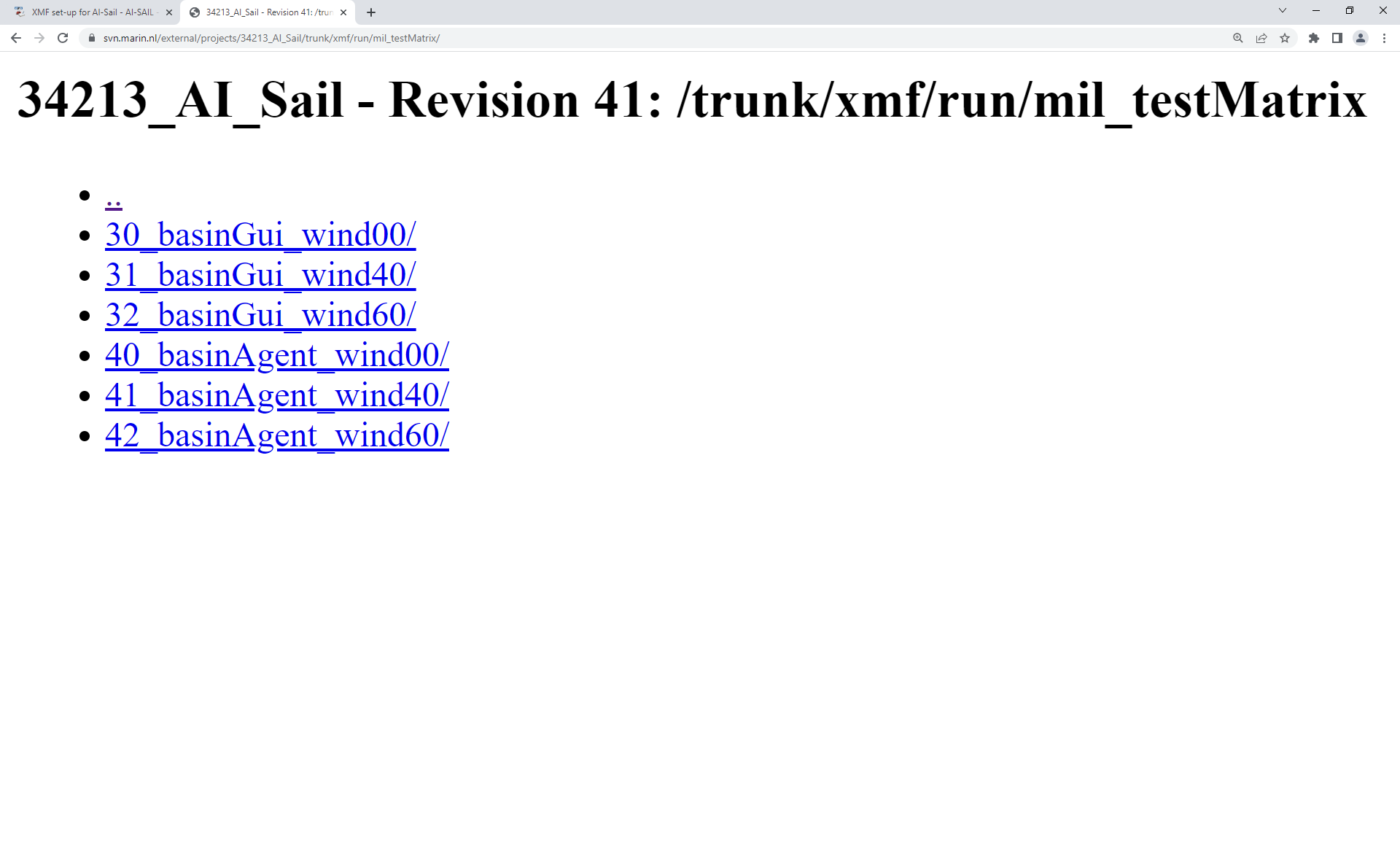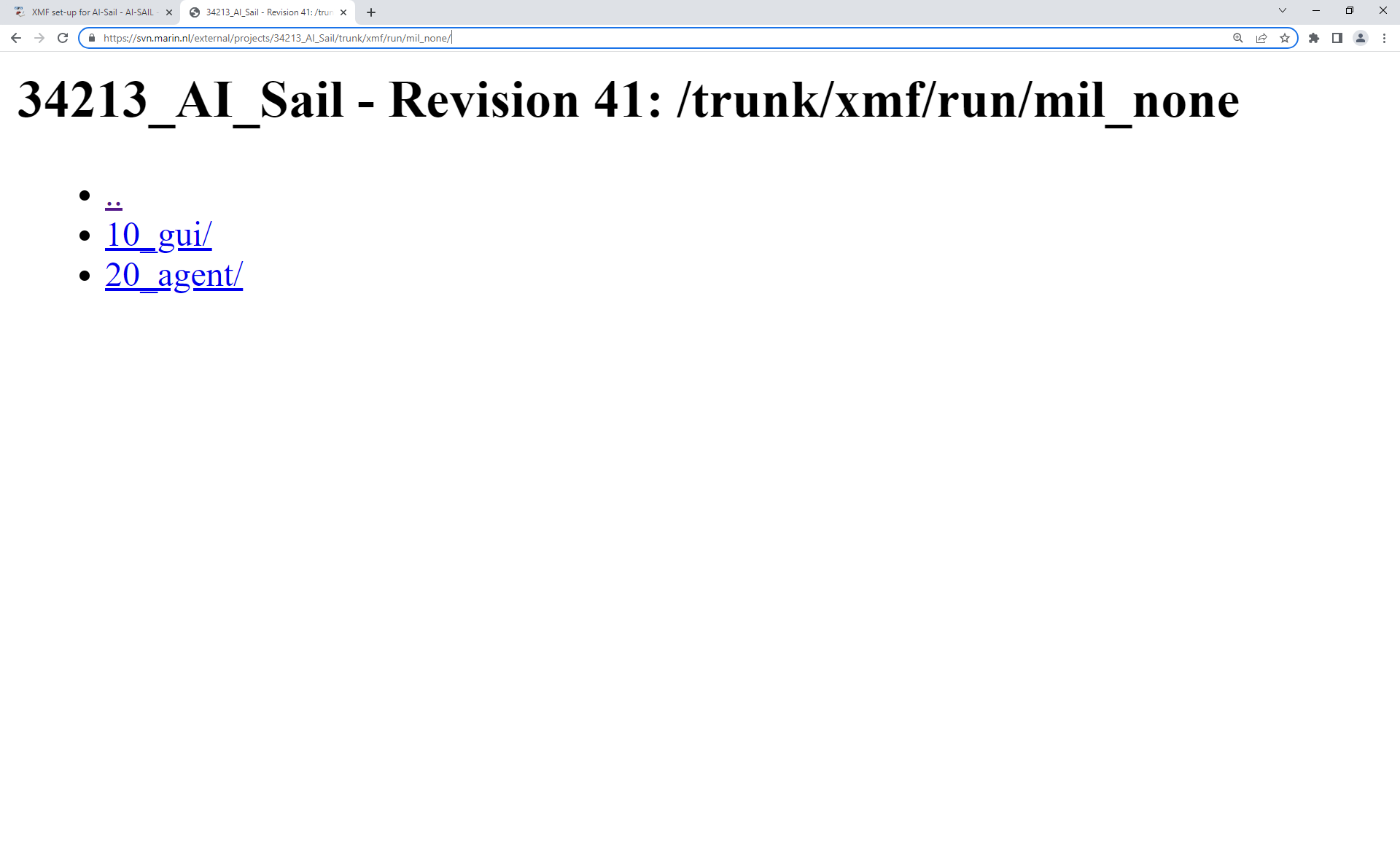d
| To-do-list based on observations in April basin slot | Status |
|---|---|
| Inspect agent messages to trace the set XMF states by the basin | Incorrect sequence of the set state in XMF state machine by the facility |
| Inspect main sheet control to avoid an initial value of 0, which might be caused by the embedded GUI. | Initial length added and length is a dimensionless value between 0 and 1. |
| Create a tagged version of the XMF configuration files, which were used in the April slot. | Version 1.0.0 was created. |
| Root cause analysis of the missing logged samples at t=0.1s. | Incorrect sequence of the set state in XMF state machine by the facility |
| Doubts about meaning of set integer for status value by agent (0,1,2), info only. | Minor issue and ignored for now. |
Write a MIL procedure to check your XMF model behavior after enabling the re-initialize state. | Checked October 13th 2023 in the OO&S lab with xSimulation 2023.02.2 |
| Add line tension (true/false) to the state | Skipped, due to issues to retrieve proper values for both the XMF physics and basin set-up |
| Add reward optionally to the the com node | Skipped |
| Include change rate settings for all three actuators | Property references are now included for all three actuators. |
Repository with the XMF configuration files
The AI-Sail XMF configuration files are saved in a SVN repository.
The url of this repository is:
https://svn.marin.nl/external/projects/34213_AI_Sail
This repository contains the trunk, branches and tags as depicted below. For now the files are only saved and edited in the trunk.
Created branches and tags are listed below.
Table: Listed versions and associated descriptions
| Version | Description |
|---|---|
| 1.0 | Maintenance branch for the the first Offshore Basin slot in April/May2023 |
| 1.0.0 | First tagged version of the maintenance branch 1.0 (OB April/May 2023) |
Which version of the simulation software must be used?
Version 2023.02.1 of xSimulation must be used for branch 1.0.
It can be downloaded from this location:
I:\Applications\xsimulation\Releases\202302
How is the simulation environment configured?
The xmf directory contains a number of directories, which are listed in the figure below.
The _info directory contains all available background information, which was used to set-up the numerical XMF model. This information consists for example of papers, script, drawings and CAD files.
The supported modes
At this moment four modes of the numerical model are supported. These modes are listed below and further explained in the paragraphs of this section.
Modes:
- Xsfviewer with embedded Optimist GUI
- Fast-time (FT) and the RL-agent
- The basin with Xsfviewer and GUI
- The basin, Xsfviewer and the RL-agent
A dedicated main.xmf file is available for each mode. Accordingly, XMF nodes can be included/excluded and enabled/disabled to obtain the required behavior of the mode. If the basin is not included, a physics model in XMF will be used to model the Optimist's behavior. When the basin controls XMF, the Optimist's state from the basin is directly set to the bodies and actuators in XMF. With this solution the interface between XMF and the RL-agent remains intact. There is no intrusive behavior on this interface once the basin is included.
Xsfviewer+GUI (mode 1)
The main.xmf of this mode is saved at this location: xmf\general\mode\gui . The physics of the Optimist model is part of the hull body hydrodynamic nodes and the three coupled bodies by means of constraints. The three actuators (main sheet, rudder, ballast weight) can be controlled by an embedded GUI in the Xsfviewer. This mode allows you to simulate sailing an Optimist and obtain a better understanding about the actions and consequences of these actions. Experienced sailors can comment on the realism of the physics in this mode.
Fast-time (FT) and the RL-agent (mode 2)
The main.xmf of this mode is saved at this location: xmf\general\mode\agent . This physics of this mode is identical to the previous mode. The three controls of this mode are now coupled to the RL-agent to operate the Optimist. For practical reasons the model will only be operated in Fast-time (FT), although runs can also be visualized with Xsfviewer and an active RL-agent
The basin and the Xsfviewer+GUI (mode 3)
The main.xmf of this mode is saved at this location: xmf\general\mode\basinGui. The state of the Optimist in the basin is transferred to the bodies and objects of numerical Optimist model. The Xsfviewer displays the Optimist's position, attitude and velocities as it is operated in the basin. The actuators of the Optimist in the basin are controlled by the GUI in the Xsfviewer. You can consider this mode as a remote control of the Optimist. No RL-agent is coupled.
The basin, Xsfviewer and the RL-agent (mode 4)
The main.xmf of this mode is saved at this location: xmf\general\mode\basinAgent. The state of the Optimist in the basin is transferred to the bodies and objects of numerical Optimist model. The Xsfviewer displays the Optimist's position, attitude and velocities as it is operated in the basin. The actuators of the Optimist in the basin are controlled by the RL-agent.
The main.xmf files supporting the four modes are located in directories of the xmf/general/mode directory as displayed below.
How to run a simulation in a particular mode?
The main.xmf file is called by an input.xmf file. The input.xmf file is extended with property references, which are favorable for the preferred mode. These property references can be set on the command line or selected in the basin by means of the MIL-GUI (Model-In-the-Loop Graphical User Interface). This GUI is generic and only supports the coupling between the basin and XMF. The input.xmf files are saved in the run directory as displayed in the snapshot below. The agreed conventions of the MIL coupling between the basin and XMF are followed.
The mil_benchmarks directory contains the basic checks (benchmarks), which are executed in the basin prior to any MIL project. The test matrix for the MIL application in the basin are saved in mil_testMatrix directory and displayed below. In total six tests are available, which are a combination of two (2) modes and three (3) wind velocity settings (0%, 40% and 60%). The selected wind velocity should match with the applicable wind setting in the basin. If not, incorrect apparent wind velocities and headings are recorded by the anemometer in the XMF model and transferred to the RL-Agent.
The input.xmf files of the other modes (gui and agent) are saved in the mil_none directory. Properties are typically set on the command line.





